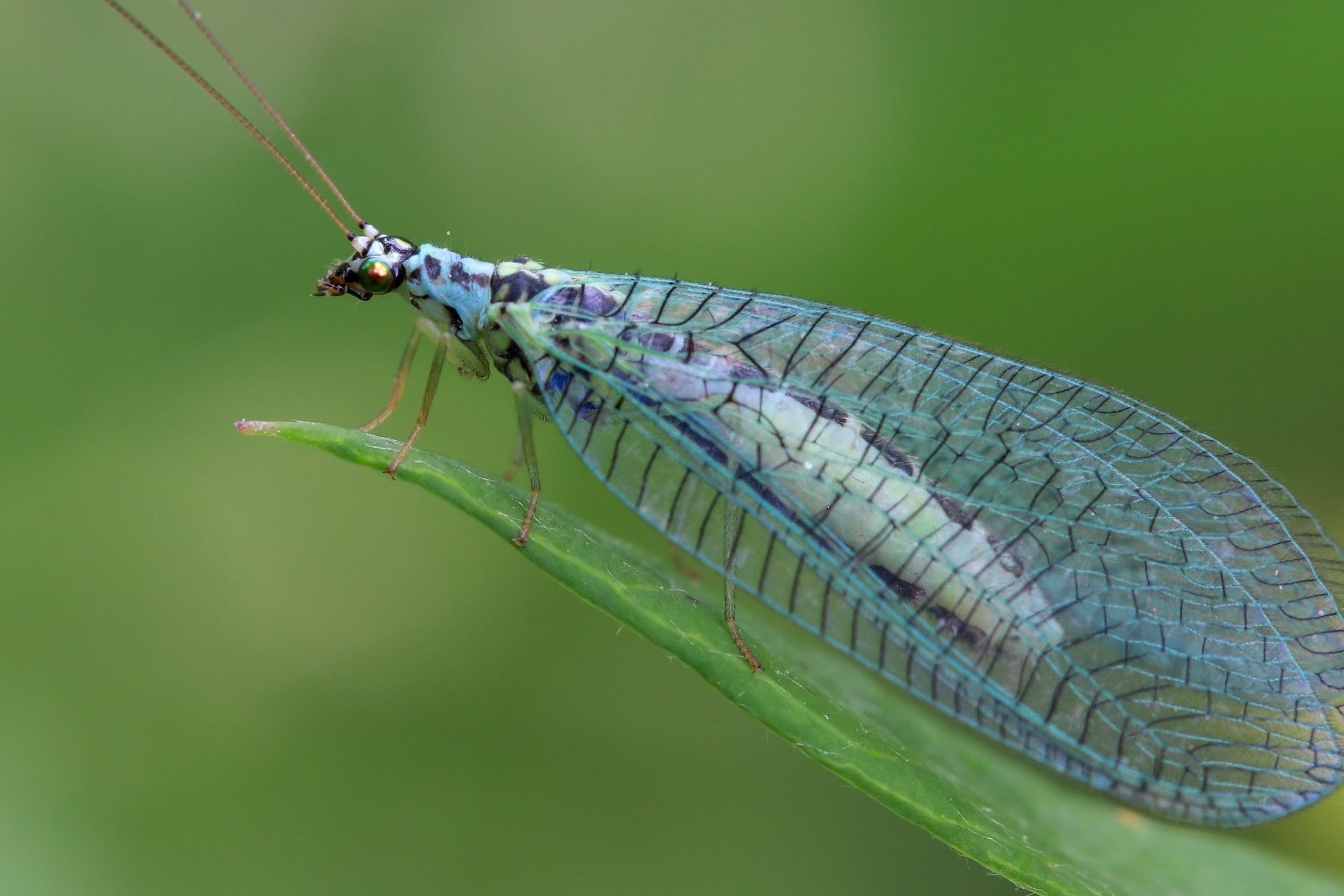Chrysopa perla
(Chrysopa perla)

Description
Chrysopa perla is an insect species belonging to the green lacewing family, Chrysopidae (subfamily Chrysopinae). This widespread species is present in most of Europe and in temperate zones of Asia. These insects prefer cool and shady areas, mainly in deciduous woods, wet forests, woodland edges, hedge rows, scrubby grassland and shrubs. The adults reach 10–12 millimetres (0.39–0.47 in) of length, with a wingspan of 25–30 millimetres (0.98–1.18 in). The basic coloration of the body is green. Wings are blue-green with black veins. They turn pale yellow during the winter. Several black markings are present on the head, the thorax and below the abdomen. The second antennal segment is black. This species is rather similar to Chrysopa dorsalis, showing an oval pale spot between the eyes, which is roundish in C. perla. Adults can be encountered from May through August. They are fearsome predators, primarily feeding on aphids, occasionally on flower nectar. The females usually lay eggs near aphid colonies. Larvae are predators, mainly feeding on Aphididae, Coccidae species and caterpillars (Pieris brassicae, Autographa gamma). The adult insects hibernate in winter Chrysopa is a genus of green lacewings in the neuropteran family Chrysopidae. Members of this genus and the genus Chrysoperla are common in much of North America, Europe and Asia. They share similar characteristics and some species have been moved from one genus to the other and back again. Their larvae are predatory and feed on aphids and members of this genus have been used in biological pest control. William Elford Leach first described this genus in 1815 in Brewster's Edinburgh Encyclopædia. Albert Koebele introduced species of Chrysopa to New Zealand in the 1890s, as a method to combat aphids, however no Chrysopa species were able to establish.
Taxonomic tree:







